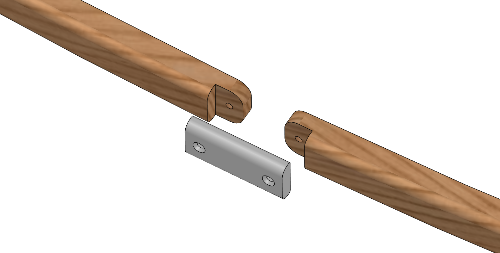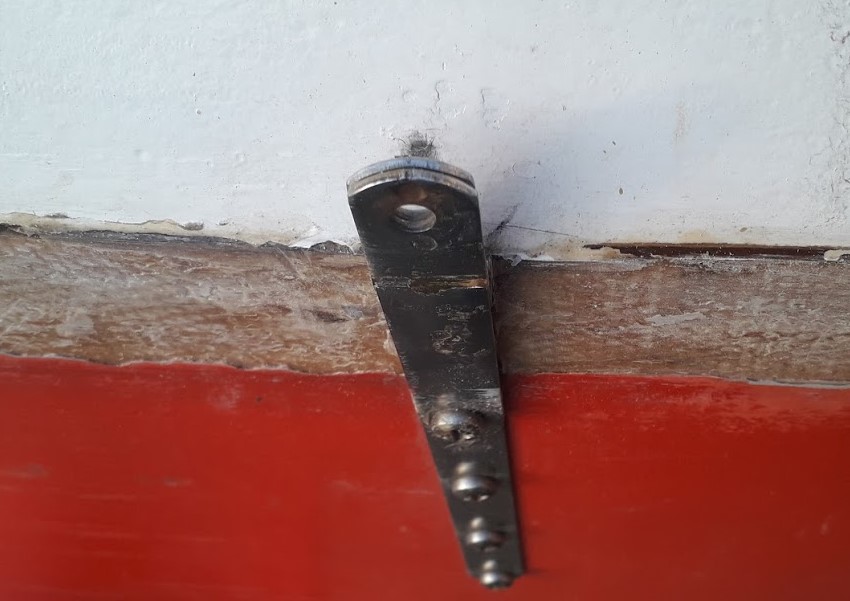Scarfing and fitting Iroko outwales?

|
Paul H (admin) |
Scarfing and fitting Iroko outwales?
|
|
Is it feasible to scarf Iroko outwales? The softwood outwale I built Millibee with has rotted in places after 15 years. I've stripped the port side completely, ready for replacement.
I can buy 4x1 Iroko lengths, but 2.65m is all Robbins have in stock, £38 for 2 lengths if I collect. With my bandsaw I could cut the lengths to about 55mm wide and scarf them to approximately 4.7m. Checking MilliBee's plans, Paul Fisher specified 18x50 gunnels - that's a lot easier to bend than 25mm or the 28mm rough sawn Iroko plank I bought for the keel. I'd want to oil them, hoping a good oil would protect the thin epoxy joint from UV. Being a pocket cruiser, clamps only work in the cockpit area, the cabin area has to be screwed, from inside or out. What wood and technique do the experts suggest? cheers Paul |
|
|
This post was updated on .
Hi Paul, We have iroko outwhales on our sailing dinghy - they are in reasonable condition 53 years after the boat was first launched. They get an occasional coat of the deks wood oil, could do with another coat now.
Ours are in several short lenghts but there is intentionally a gap at the ends this covered with pieces cut from Tufnol although you could use other types of strong plastic. The idea is that this forms slots along the length of the topside and we fasten our tent by having a cord sewn into the hem at the edge of the tent passing up from under the out whale, through the slot and into the boat where is secured on cleat. This makes a neat way to fix the tent, we also sometimes use those slots for holding fenders. The brown Tufnel is a prety good match for the color of the wood. It needs to be fastened securely, espeicially if you are going to use it to hold fenders. if you have access from the inside of the boat I would use countersunk machine screws with nuts and washers inside the boat. Quik pic attached 
|

|
Paul H (admin) |
Re: Scarfing and fitting Iroko outwales?
|
|
Thanks John for the interesting reply.
Ah the days of Tufnol, I remember them well. Tufnol was a technological leap from Bakelite ha ha. I had already thought about splitting the outwales at the chainplates, secured by four M6 machine screws. Previously I chiselled a notch before fitting them, but I don't think the notch was sealed well enough. It's a logical place to insert a Nylon block for a fender and bolting the outwale sections secures them.  I plan to seal the sheathing exposed after carefully chiselling away the damp wood, then paint it with hull red. Hopefully I can secure the outwales with wood screws and bolts, but no epoxy, for future maintenance. -Paul |
|
|
Well, Tufnol is still very much available whereas I am not sure that Bakelite is. (Wikepedia tells me that Bakelite was the first plastic made from synthetic components, patented in 1909)
Amazingly, as far as I can tell, Tufnol is still made by Tufnol Composites Ltd. in Birmingham UK and it is available from numerious internet shops. It comes in different varieties that are named after animals, but not just one sort of animal - Whale - Vole - Carp - Crow - what's the common factor!? For a recent project where I needed a strong plastic material I have used G10 which refers to a set of standards for epoxy glass laminate. It is available from various manufacturers and internet shops. G10 is stronger than Tufnol, at least along the 'grain', approaching the ultimate tensile strength of mild steel at a fraction of the density, also you can stick it together with epoxy resin - a useful material for making small parts in boat building. It may not be all that strong accross the 'grain' - I had one piece of G10 sheet that split very easily on a plane a little below the surface, maybe that was a faulty sheet. I think the Tufnol people also make G10, but they seem to call it 10G. |

|
Paul H (admin) |
Re: Scarfing and fitting Iroko outwales?
|
|
John,
I had a look at the Tufnol website and yes it's a great material, ideal for some projects I have in mind. Like a useful gooseneck. My ancient gooseneck has no captive fitting to the boom, and you can't drop the mast without disconnecting the boom; the joint won't swing up 90 degrees without damage. Getting under Hayling Island bridge can be handful; being forced to disconnect the boom, the gooseneck spigot once punched a hole in my hatch when the mast came down. So an offset gooseneck joint, offset at least 50% of the boom thickness from the mast, could swing up by 90 degrees, allowing mast and boom to be parallel but still connected. Making the boom captive with a bolt or R spring clip would keep everything together. There are times when reefing that a gust can pull the boom off the spigot. I had thought stainless was the only option, but it's difficult to machine at home. Tufnol plus stainless fittings could be a good compromise. I'm curious about how you attached your Iroko outwales. There seem to be 2 approaches: epoxy or dry screw. cheers -Paul |
«
Return to General Discussion
|
1 view|%1 views
| Free forum by Nabble | Edit this page |
